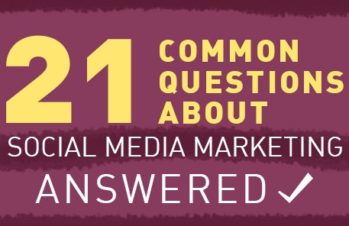Memes are taking over the world. Seriously. You’ve seen those little pictures with funny captions on your Facebook feed, right? Memes are everywhere. People create them to make political statements, to crack up their buddies, and, most importantly for our purposes here, to market their businesses.
So why is it that memes are so popular? Well, aside from the fact that they’re usually hilarious, they’re easy to make, easy to consume, and easy to share. What could be more perfect for use as a marketing tool?
Before you run off and start posting picture after picture of cats with a very limited grasp of English grammar on your company’s Facebook page, though, let’s take a minute to discuss just how this tool can fit into your social media marketing strategy.
1. First of all, decide what exactly you want from your meme.
Are you using it to build brand awareness or loyalty? To promote a contest, or a sale you’re having, or maybe a new line of products or a new service you’ve added? Be sure to keep this goal foremost in your thoughts as you continue – ’cause it’s really easy to get distracted by all the cute kittens once you’re in knee-deep!
2. Secondly, you’ll need to decide which type of meme to use.
You can always stick with the old standard – an image with a funny caption. This type is the quickest and easiest to create and share. But memes are sort of like Pokemon – there are a bunch of different kinds, and you’ll probably want to catch…er, make use of… them all, at some point or another.
For example, there are benefits to making your meme interactive – that is, asking customers to upload their own pictures based on your company’s suggestions. (Think Captain Morgan poses) You can also put out a call for customer videos. (Remember shamrocking?)
Basically, anything that repeats a familiar theme, but with a unique twist, can be considered a meme: dubbing a new soundtrack over a familiar video, adding different captions to a familiar image, showing pictures of different people in a familiar position, or videos of different people doing a familiar action. So be creative!
3. Next, analyze your customers.
What do they have in common? What will all of them (or at least most of them) find funny? Do they have time to watch videos, or would a quick picture fit their lifestyle better? If you own a “Cats Only” food and supply store, you’d get a lot of mileage out of a meme making fun of dog people, or talking about how awesome cats are. But a meme about something on Star Trek? Not so much.
4. Now, time to get down to business, and create your meme!
If you’re creating your own meme, try a meme generator like quickmeme.com. Follow the simple directions to choose an image, add a caption, and voila! You’ve got yourself a meme! You could also use a program like Photoshop to make a new meme from scratch.
If you’re collecting customer pictures or videos instead, it’s probably best to have them emailed to you first for screening purposes, rather than allowing people to upload them themselves – just to be safe. Once you’ve viewed them, you may also want to think of comments you can add to each one you post.
5. Finally, post your new meme on the social media sites you use, and encourage sharing.
Nothing gets more likes and shares than something that’s funny. If you’ve done your job well, your meme may even go viral. How cool would that be? Fame, fortune, and a bunch of cute kitten pics? What more could anyone ask for?







